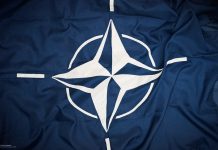
Iran’s Deputy Defense Minister, Mehdi Ferhi, has confirmed the finalization of agreements for the procurement of Su-35 fighter jets and Mi-28 helicopters, according to multiple sources. Ferhi disclosed this information during an interview with Iran’s semi-official Tasnim news agency, stating that the delivery process for the Russian-made combat aircraft and helicopters is currently underway.
However, the specifics of the payment method employed by Iran for these supplies remain ambiguous. It is speculated that Iran, a supplier of Shahid-136 Loitering munitions to Russia, may have engaged in a barter-style trade.
This development marks a new chapter in Iran’s quest to acquire the Su-35. Earlier this year, the deal faced some hurdles when Mohammad-Reza Gharaei Ashtiani hinted at a shift in plans, suggesting Iran’s potential to manufacture such advanced fighter jets domestically.
Despite previous announcements by Iranian officials about imminent deals with Russia for the Sukhoi Su-35 fighter jets, no tangible outcomes have been observed yet. Ashtiani refrained from providing explicit details but confirmed that Iran had initially agreed to a purchase before recognizing their domestic production capabilities. He did not rule out the possibility of revisiting the procurement, stating that the authorities were assessing the situation and would reconsider if necessary.
Regarding the acquisition of Mi-8 helicopters, Iran has remained silent on the specifics of the deal, including the number of units agreed upon with Russia.
In September, it was reported that Iran received an unspecified number of Yakovlev Yak-130 ‘Mitten’, a sophisticated jet trainer and light attack aircraft from Russia. The aircraft, spotted in flight at Isfahan International Airport’s 8th Tactical Air Base, bore the markings of the Islamic Republic of Iran Air Force [IRIAF] and the national registration serial number 7-9701.
The primary objective of acquiring these Russian aircraft, as shared by Iran’s Fars News Agency, is to enhance the training and combat capabilities of the IRIAF. However, details regarding the final quantity, delivery dates, operational units, roles, or basing have not been disclosed.
The Yak-130 aircraft, similar in appearance to the Leonardo M-346 Master and the HAIG L-15 Lieying, is an advanced, twin-seat, twin-engine jet trainer aircraft with additional light attack capability. The IRIAF model reportedly seen is equipped with underwing and wingtip pylons, suggesting its readiness for its secondary role, and nine hardpoints for attaching rocket pods, air-to-surface missiles, machine guns/cannons, and guided or unguided bombs.
The aircraft’s specifications include a maximum take-off weight of 3,000 kg, a top speed of 572 kt, a travel range of up to 1,600 km, a service ceiling of 41,020 ft, and an endurance period of three hours. This includes the addition of two drop tanks and an optional removable in-flight refueling probe.
In another development, the Egyptian government has reportedly ordered 24 Sukhoi Su-35S fighter jets from Russia to bolster the capabilities of the Egyptian Air Force [EAF]. However, the delivery of these jets from Russia to Egypt has been significantly delayed. While Egypt cites technical issues as the primary reason, political reasons are speculated to be behind the non-delivery. Interestingly, Iran has emerged as the purchaser of the Su-35s initially destined for Egypt, having completed the necessary formalities with the Russian Federation.
Analysts believe that the acquisition of new aircraft will significantly strengthen Iran’s Air Force, which is currently hampered by a lack of modern equipment and spare parts due to sanctions. The procurement of the Su-35 by Iran could potentially change Israel’s strategy for countering Iran’s nuclear program, which Israel views as a significant threat to its security. Recent reports suggest that Iran has already enriched enough uranium to create its first nuclear bomb.
The Su-35 has the potential to restrict Israel’s operations over Iran, including Syria, where President Bashar al-Assad allows Tehran-backed militias to establish bases and weapons depots. Middle Eastern analysts suggest that these Iranian Su-35s could potentially track and interfere with the mid-air refueling of Israeli F-35s. This introduces an elevated risk for both Tel Aviv and the Air Force.
Unconfirmed sources indicate that Iran is already in the process of preparing a permanent station for the Su-35. It’s worth noting that a few months ago, satellite images of Iran’s Eagle 44 base were published on BulgarianMilitary.com. A full-scale model of the Su-35, observed at the entrance of the base, suggests that the Iranians have been testing the underground depots and runways on the base for compatibility with the Russian fighters.





